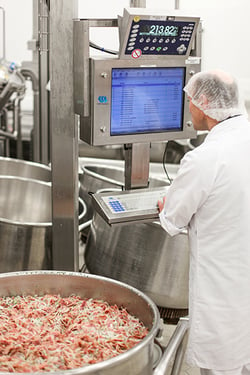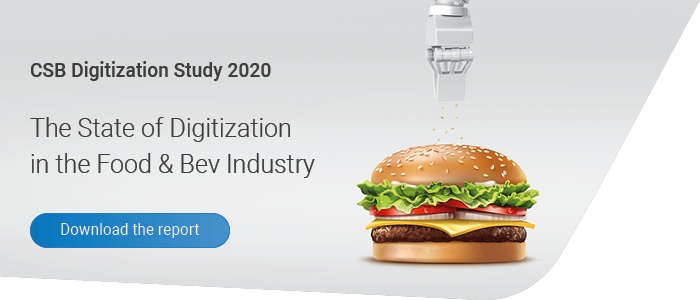The recipe is at the center of the food production. It has a sensitive nature. Even minor changes in the composition of products can have a major impact on taste, quality – and margins. Six reasons why food companies should use a specialized software system.
1. You comply with regulatory requirements more dependently
You need to have full control of your products' composition to ensure compliance with current laws and directives and to meet the strict requirements of trade as well as the sensory expectations of your customers. This also includes the automatic labeling of allergens, nutritional values and ingredients. Needless to say, food companies offering a large variety of products want the support of an adequate software system as manually maintained spreadsheets have their limitations.
2. You can rely on quality that is reproducible
Another key word is quality that is reproducible. Every day, you are aiming at consistent quality in production. To do so, your staff needs automatic research functions and quick access to all recipes. Ideally, bills of materials, technology descriptions and work instructions are available in electronic form also in the production area, for example at industrial PCs or even on tablets. Connections to scales or silos ensure that the employees follow a strictly defined procedure to achieve standardized and constant high product quality of every single batch.
3. You establish risk management and transparent documentation
 Along the way, you also establish a well-functioning risk management system. As your employees have no options other than manufacturing the products exactly in line with the specifications and legal requirements, the amount of rejects is reduced. Plus, the risk of costly recalls is reduced substantially.
Along the way, you also establish a well-functioning risk management system. As your employees have no options other than manufacturing the products exactly in line with the specifications and legal requirements, the amount of rejects is reduced. Plus, the risk of costly recalls is reduced substantially.
Moreover, IT-aided recipe and batch management enables exact documentation, in the end, the recipes represent a complete picture of the processes in production. Material flows, quality relevant data or changes in the process. Everything is logged accurately and can be demonstrated if, and when needed.
4. You improve your margins
Optimizing the recipes also helps food companies to increase their margins. Taking into account chemical and technological restrictions, CSB-Recipe Optimization calculates the most cost-effective composition of products while maintaining constant high quality levels. Essential production and food specific data, as well as legal requirements are taken into account. Experience has shown that optimizing the material input significantly reduces the costs and increases the gross margins of every product. Depending on the initial situation, savings of over 5 percent of the materials input are feasible. On average, further savings converge around 1 to 4 percent.
5. You create the basis for small lot sizes and individual products
Good recipe management not only implies standardization and cost reduction, it also enables economical manufacturing of individual products. According to market research forecasts, consumers will increasingly demand food products that match their special preferences and eating habits or that are good for their health. Supplying data on ingredients, allergens, nutritional values and GMO, recipe management is the basis that enables you to serve the megatrend of individualization. Economical production of small lot sizes is only possible if you are able to verify recipe data quickly and easily, and if you can adjust them flexibly, for example in the case of component bottlenecks. Ultimately, recipe management also ensures absolute cost transparency of the raw material input.
6. You push the networking with the machines
In the context of the networked factory, recipes make an important contribution. For example, the recipes, specifications and nutrition information stored in the ERP system can be linked with the sensors of production machines. Such networking not only enables more precise production planning and automated quality management, but also enhances food safety. In the end, the recipe may even become the heart of the digital production – by harmonizing even more the entire information and material flow of complex multistage production facilities.


